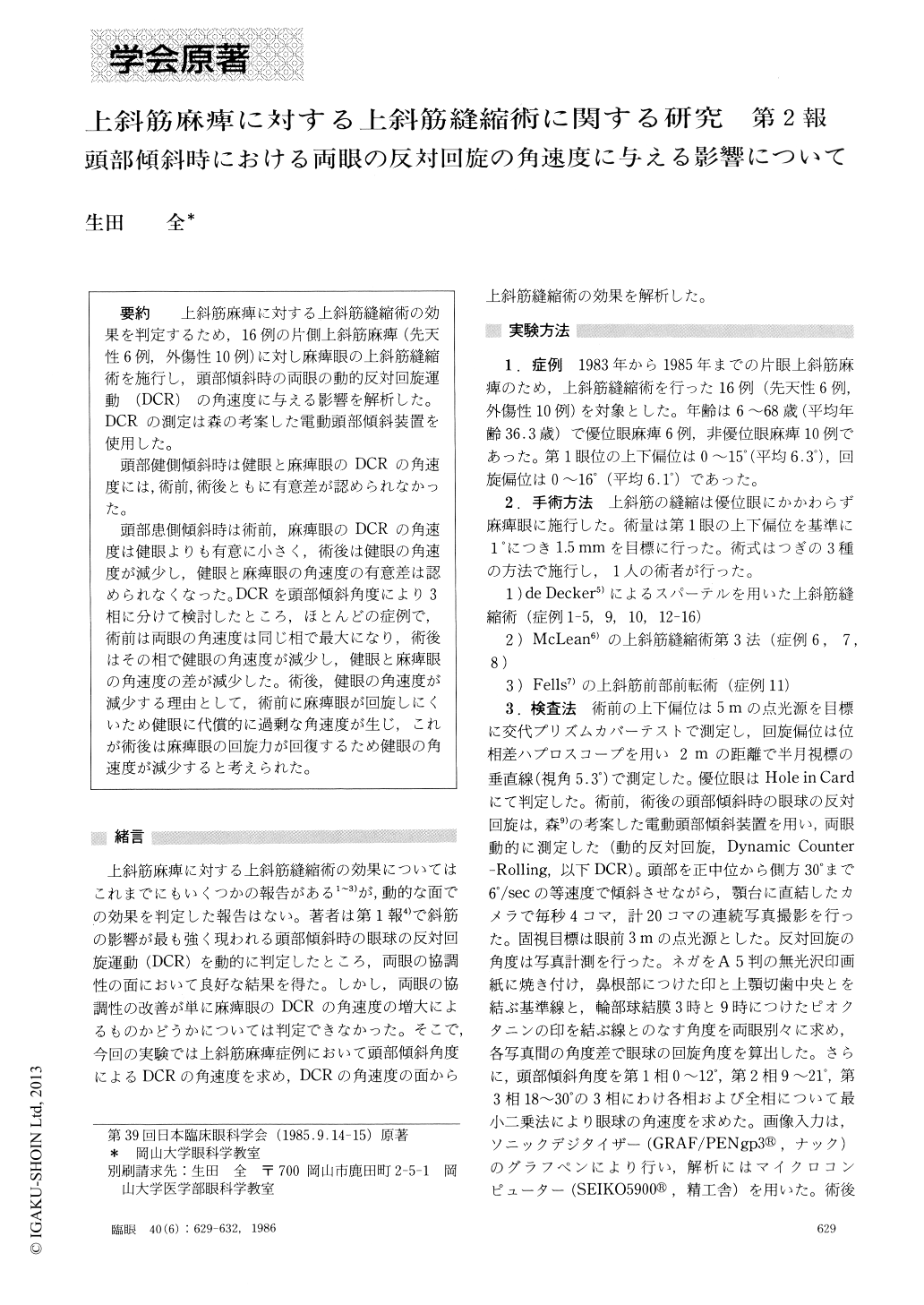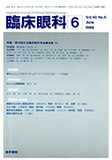Japanese
English
- 有料閲覧
- Abstract 文献概要
- 1ページ目 Look Inside
上斜筋麻痺に対する上斜筋縫縮術の効果を判定するため,16例の片側上斜筋麻痺(先天性6例,外傷性10例)に対し麻痺眼の上斜筋縫縮術を施行し,頭部傾斜時の両眼の動的反対回旋運動(DCR)の角速度に与える影響を解析した.DCRの測定は森の考案した電動頭部傾斜装置を使用した.
頭部健側傾斜時は健眼と麻痺眼のDCRの角速度には,術前,術後ともに有意差が認められなかった.
頭部患側傾斜時は術前,麻痺眼のDCRの角速度は健眼よりも有意に小さく,術後は健眼の角速度が減少し,健眼と麻痺眼の角速度の有意差は認められなくなった.DCRを頭部傾斜角度により3相に分けて検討したところ,ほとんどの症例で,術前は両眼の角速度は同じ相で最大になり,術後はその相で健眼の角速度が減少し,健眼と麻痺眼の角速度の差が減少した.術後,健眼の角速度が減少する理由として,術前に麻痺眼が回旋しにくいため健眼に代償的に過剰な角速度が生じ,これが術後は麻痺眼の回旋力が回復するため健眼の角速度が減少すると考えられた.
Sixteen cases with unilateral superior oblique palsy were treated by tucking procedure of the paretic mus-cle. The series included 6 congenital cases and 10 trau-matic ones. In order to evaluate the effect of tucking on dynamic counter-rolling (DCR), the angular velocity of the eye was measured with the head tilted to either side before and after surgery.
The angular velocity of the paretic eye was less than that of the fellow eye when the head was tilted to the paretic side. There was no difference in the angular velocity between both eyes when the head was tilted to the sound side (p<0.01).
After tucking procedure, The angular velocity of the sound eye became less than the presurgical value when the head was tilted to the paretic side. The tucking procedure failed to influence the velocity of either eye when the head was tilted to the sound side. The angular velocity was further analyzed by divid-ing the DCR into three phases according to the degree of head tilt. The maximum velocity of both eyes occurred in the same phase prior to surgery. The velocity of excycloduction of the sound eye was reduced after surgery. It appeared that the impaired incycloduction of the paretic eye induced compensatory excessive excy-cloduction of the sound eye. Conversely, recovery of incycloductive force of the paretic eye after surgery would reduce excycloduction of the sound eye.
Rinsho Ganka (Jpn J Clin Ophthalmol) 40(6) : 629-632, 1986

Copyright © 1986, Igaku-Shoin Ltd. All rights reserved.


